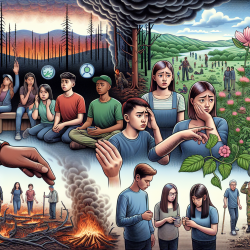Unveiling the Long-Term Mental Health Impact of the 2016 Fort McMurray Wildfire on Youth
The 2016 Fort McMurray wildfire, often referred to as "The Beast," left a trail of destruction and chaos, forcing 88,000 residents to evacuate and destroying 10% of the city's homes. In the aftermath, a comprehensive study was conducted to examine the long-term psychological impacts on youth aged 11-19 years. The findings, based on 9,376 survey responses, are both revealing and alarming.
Unexpected Findings: Mental Health Symptoms Worsen Over Time
Contrary to the initial hypothesis that mental health symptoms would improve over time, the study found that symptoms of PTSD, depression, anxiety, and substance use increased from 2017 to 2019. This deterioration in mental health was accompanied by a decrease in self-esteem and quality of life scores, while resilience scores remained unchanged. These findings highlight the persistent and worsening mental health challenges faced by youth in the years following a natural disaster.
Implications for Practitioners
As a practitioner, these findings underscore the importance of implementing multi-year mental health support programs for youth in post-disaster situations. Here are some actionable steps you can take:
- Develop Long-Term Support Programs: Design interventions that extend beyond the immediate aftermath of a disaster, focusing on sustained support for affected youth.
- Tailor Interventions to Specific Groups: Pay special attention to older students, females, and gender minorities, who were found to experience higher levels of distress.
- Enhance Resilience: While resilience scores did not change significantly, fostering resilience through community support and skill-building can be crucial in mitigating long-term mental health impacts.
Encouraging Further Research
The study highlights the need for further research into the factors that influence recovery and the efficacy of psychosocial strategies in later phases of disaster recovery. Practitioners are encouraged to explore these areas to better understand and address the complex needs of youth affected by natural disasters.
To read the original research paper, please follow this link: Mental Health Symptoms Unexpectedly Increased in Students Aged 11–19 Years During the 3.5 Years After the 2016 Fort McMurray Wildfire: Findings From 9,376 Survey Responses.










